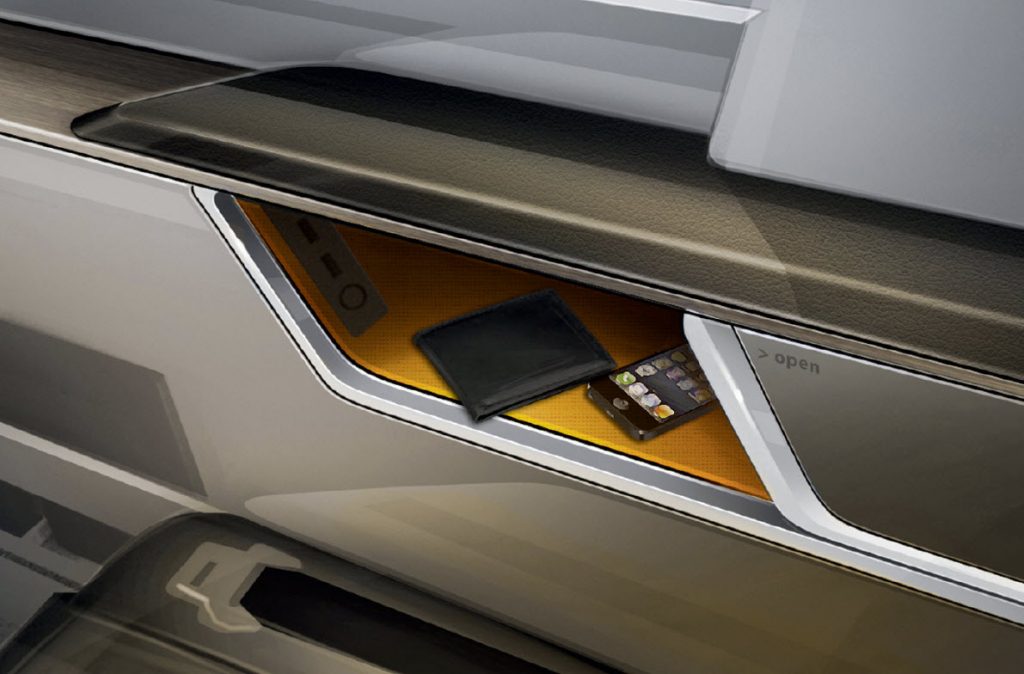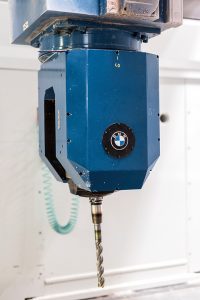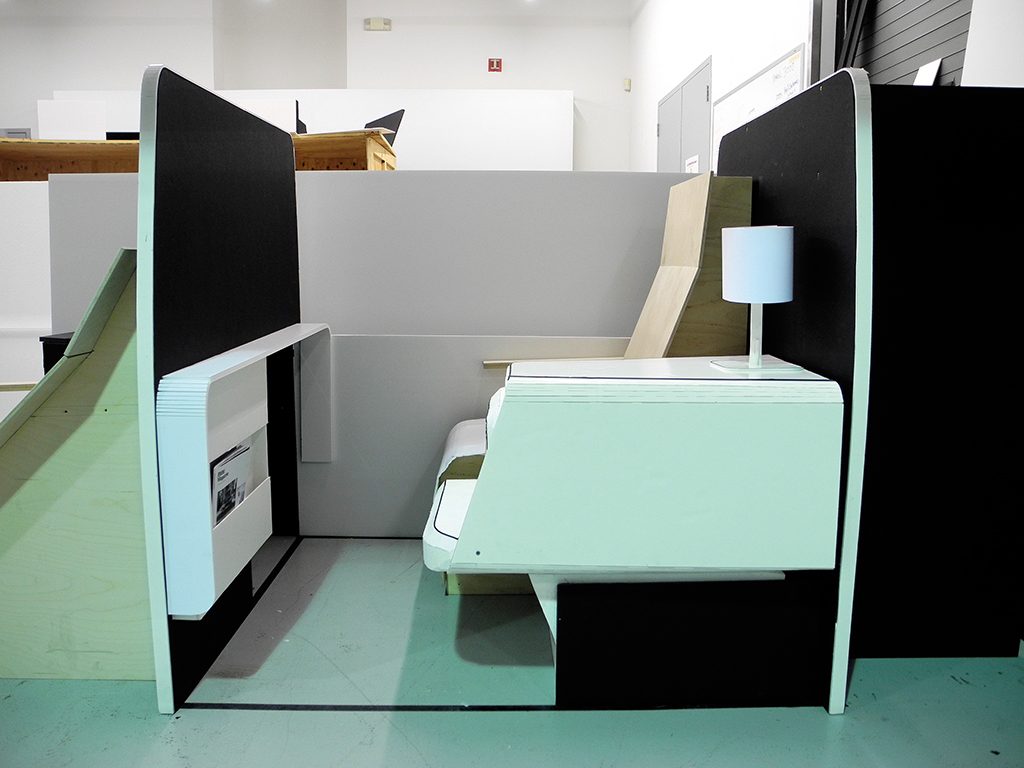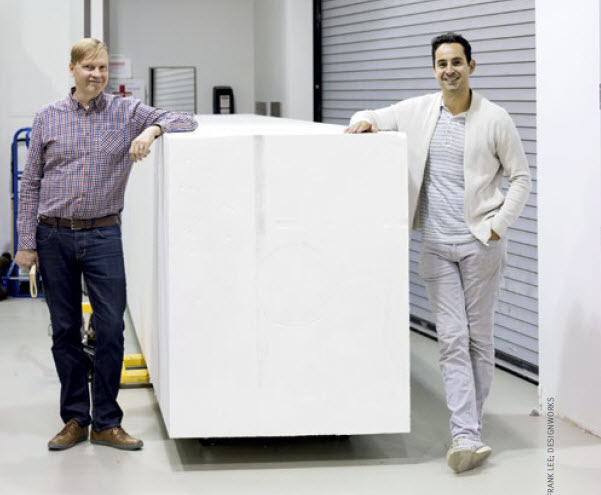Written for the Airline Passenger Experience Association
APEX Experience Magazine – Issue 6.4 – November/December 2016
APEX Insight: From prototype to final product, Designworks puts its concepts to the test every step of the way, because how something functions is as fundamental as how it looks.
It doesn’t take a crystal ball to look into the future. It takes foam. Huge blocks of solid foam that are sculpted to millimeter precision by a massive five-axis milling machine that gets its instructions from sophisticated modeling software – software that gives the multidisciplinary, cross-cultural and creative team at Designworks, a subsidiary of the BMW Group, the ability to be makers, not only designers.
Anything from a toothbrush to components of a first-class aircraft seat or even a tractor might rise out of the foam in the milling machine’s garage-sized restricted-access workspace. Then the fun begins, examining, testing, and modifying and retesting what’s been created.
Foam Formations and Plywood Prototypes
In developing designs for aircraft interiors and seating, “It’s all about the passenger experience,” says Johannes Lampela, director of Design. “But to understand that, you can’t just do that on a computer screen; you have to build it and test it. We have a huge facility that gives us the ability to mock things up and be experimental and test the relationships.”
A seat’s feature set can include the size of the seat, bed and screen; specifications for a vanity, laptop storage or any of the myriad other components that are being included in premium seats. “We quickly mock this up in plywood and foam core. Plywood, so that we are absolutely correct in the dimension, because if it’s only foam core, you can cheat. The plywood keeps it rigid,” Lampela says. That way, a designer’s work on a screen can meet real-life testing.
Lampela gives the example of a first-class passenger who’s working on a laptop when the meal service begins. There’s space for the laptop on a side shelf so that the main table can be cleared. But what if the passenger wants to get something out of the vanity? Will the laptop now be in the way of the door? “It’s so interesting when you’re working with the mock-up just how a tiny thing can have a big impact. And some of the insights we’re learning from the mock-up might not just benefit passengers; they might benefit service or maintenance,” he says.
Making a change to a foam model can be as simple as using a sharp knife to cut off an armrest and then using tape to reposition it. “In the end, because your product is going to be lived in for up to 17 hours, you have to use that as part of the design process,” says Garen Moreno, director, Strategic Partnering. “Before we go to the airline and say, ‘Here’s what your product is going to be,’ we have to make sure that it’s going to be right.”
From Mock-Up to Real Deal
As Moreno explains, “What you don’t want to do is to create products for the past. You can embrace the past, but you’ve got to be able to understand the future. And this is what is really important for us here.”
It was Designworks’ focus on the future, in part, that brought Singapore Airlines to the studio a few years ago. The airline’s project to create a new first-class cabin had a very aggressive timeline – only two years until the introduction of the new product. Designworks put together a small strategic team that included co-designers who were local to Singapore to ensure that the regional culture and trends would be correctly reflected in the new designs.
Lampela’s team began with examining Singapore Airlines’ current first-class offering. “Our first observation was that it felt like seats dropped into a cabin that didn’t have any relation to the aircraft,” he says. Understanding the constraints facing the team was key to the project. Certification guidelines, seat and cabin size, and technological requirements were just some of the factors that needed to be established.
Having a tightly defined project can offer opportunities for great solutions, according to Moreno. “If it’s only blue sky, sometimes you don’t know where you’re going … I think that you can’t have great creativity without constraints; you can’t have innovation without constraints.”
Plywood and foam cabin and seat mock-ups were tested using passengers’ activities as a guide. Everything from the boarding process through working or relaxing, food service, sleeping and departing was analyzed. All elements of the cabin, seating and service were integrated into the final holistic design, which “almost makes it feel like you’re not in a fuselage with a clump of seats, but [rather] like a first-class club,” Lampela says.
The mock-ups were then transformed into the final product. Warm-brown leather seats feature an inventive covering technique that increases tension in the material, helping it to maintain a smooth appearance after hours of use. Buttressed by padded headboards, the seats’ finishings include metal trims for enhanced user touchpoints. Tables integrated into the front of the seating area allow for extension without the need for a folding device.
A Virtual New World
Designworks recently moved its Asia-focused studio from Singapore to Shanghai, augmenting its Munich facility and Los Angeles headquarters. The company’s 1970s roots, or perhaps wheels, are found in the LA region’s car culture.
The studio began as an early 1970s version of a startup, in a garage in Malibu, California. “They did a lot of work in a variety of industries but focused a lot on transportation,” Moreno says. In the 1980s, Designworks initially partnered with BMW and since 1995 has been a subsidiary of the BMW Group.
The Designworks team that’s focused on aviation-related projects represents between 20 and 40 percent of the company, a tiny division when compared with the massive footprint of the global BMW Group. “We’re essentially a small team within the BMW design team, and we’re able to help influence work that we do across other areas as well,” Moreno says. “What’s exciting now is that because of the success that we’re having, we’re finding that a lot of our aviation designers are being asked to work on projects for other parts of the company.”
Those projects might include autonomous vehicles and new technologies like virtual and augmented reality. Designworks is testing in-cabin VR and AR, which Moreno notes isn’t just about putting on a headset. “In flight, you are in a very unique environment. You’re moving. There are physical sensations that are going to influence everything that you do,” he says, “and also psychological inputs just from having a headset on and being next to somebody. What are the social implications of VR?”
But as design begins to shift into a new virtual world, Lampela notes that it’s important to stay focused on the fundamentals, too. “Good design tells a story by addressing both functional qualities – how we use it, and emotional qualities – how we perceive it, to create better user experiences.”
Read the original story in APEX Experience Magazine – Issue 6.4



